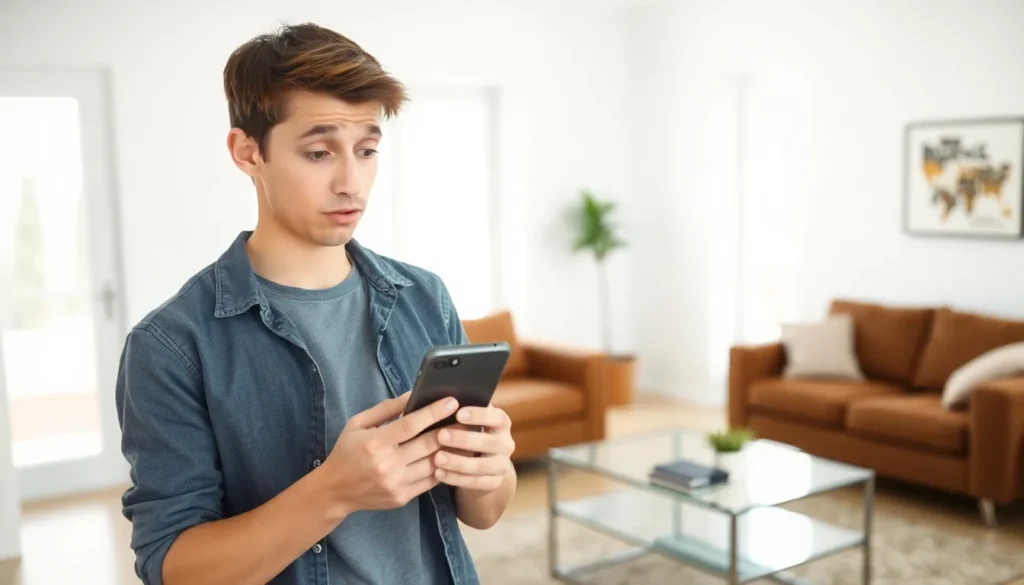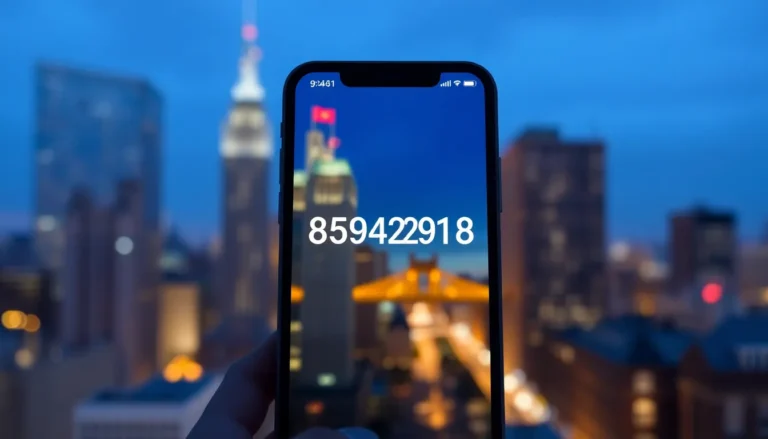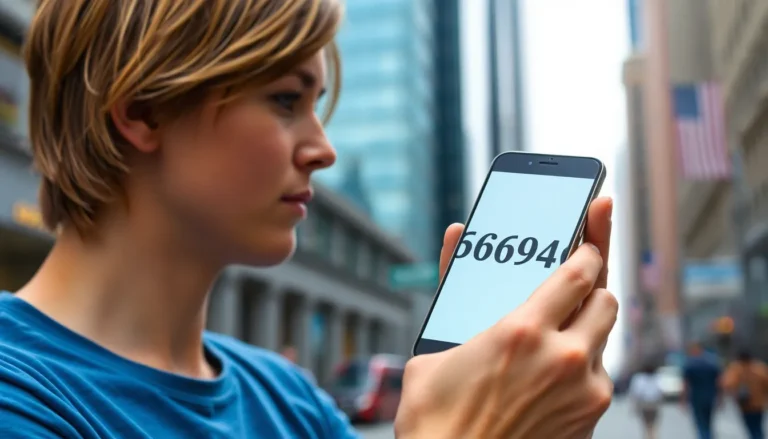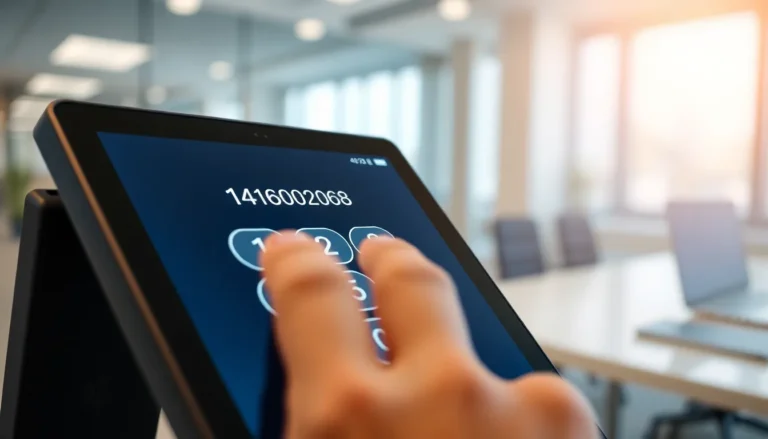Table of Contents
ToggleLosing an iPhone can feel like losing a limb. Suddenly, all those cherished photos, important contacts, and that playlist that gets them through the day vanish into thin air. It’s enough to make anyone want to throw their hands up in despair. But don’t panic just yet! There’s a game plan to follow that’ll have them back on track in no time.
Understanding The Situation
Losing an iPhone creates a sense of vulnerability. It involves the loss of access to valuable data, from photographs to contacts. Acting quickly minimizes potential misuse, particularly if the device contains sensitive information.
Determining the last location of the phone is essential. Using the ‘Find My iPhone’ feature can help pinpoint it, even if it’s turned off. Users should sign in to iCloud to track the device and potentially lock it remotely.
Reporting the theft to the local authorities is crucial. They often require serial numbers or specific details, making it easier to recover the device. Immediately providing this information increases the likelihood of recovering the stolen items.
Contacting the carrier is another important step. Carriers can suspend service to prevent unauthorized calls or data usage. Prioritizing this action helps avoid unexpected charges and protects personal information.
Changing passwords associated with important accounts helps secure personal data. If the iPhone is linked to banking or social media apps, immediately updating passwords safeguards against identity theft.
Remaining calm throughout the process supports better decision-making. Avoid panicking, as it often hinders effective communication and action. Taking structured steps enables users to navigate the situation with clarity and confidence.
Recognizing the emotional toll is also significant. It affects individuals differently, yet acknowledging the sense of loss can help in coping with the situation. Seeking support from friends or family can provide comfort during a challenging time.
Immediate Steps To Take

Acting quickly enhances the chances of recovery after losing an iPhone. Following specific steps helps mitigate risks associated with theft.
Report To The Authorities
Reporting the theft to local authorities is essential. Documenting the incident provides a record and may aid in recovering the device. When filing a report, include any available information such as the iPhone’s serial number and model. This data assists law enforcement in identifying the stolen phone. In many jurisdictions, an official report is necessary to file an insurance claim later. Always ask for a copy of the report for your records.
Check With Your Carrier
Contacting the carrier immediately helps protect against unauthorized usage. Carriers can suspend service and prevent potential charges from being incurred on the stolen device. Provide the representative with specific details like your account number and the device identification number. Most carriers offer options for reporting theft, which can simplify the process. By taking this step, users can minimize the financial impact of a stolen iPhone.
Use Find My iPhone
Using Find My iPhone can help recover a stolen device and secure personal information. Quick action increases the likelihood of locating the phone.
Activating Lost Mode
Activating Lost Mode locks the iPhone remotely. This feature displays a custom message, which can include a contact number for the finder. Additionally, Lost Mode tracks the device’s location, sending updates if it reconnects to the internet. Users can enable this feature through the Find My app on another Apple device or via iCloud.com. While in Lost Mode, the iPhone remains secure, preventing unauthorized access to data and protecting sensitive information.
Erasing Your Device
Erasing the device is a critical step to protect personal data if recovery seems unlikely. This action deletes all data and settings, ensuring that no information can be misused. Users can initiate the erase through the Find My app or iCloud.com. After erasing, the iPhone can no longer be tracked, but the erased data remains secured. It’s advisable to change passwords for important accounts post-erasure to maintain security.
Protecting Your Information
Taking immediate action helps safeguard personal data after an iPhone is stolen. Following specific steps can reduce the risk of identity theft and unauthorized access to your accounts.
Changing Passwords
Changing passwords for critical accounts must happen as quickly as possible. He should start with email accounts since they serve as gateways to other services. She can then update passwords for social media and banking applications. Use unique passwords and consider password managers for enhanced security. Frequent changes enhance protection, especially after a theft. Existing users of two-factor authentication should ensure it’s activated for added security.
Monitoring Accounts
Monitoring accounts closely plays a vital role in identifying suspicious activity. Financial accounts should get priority, as unauthorized transactions can have significant consequences. She can use alerts for account activity, making it easier to spot unusual behavior. Social media accounts require attention too, as hackers may misuse them for scams. Regularly reviewing credit reports for unfamiliar accounts is essential. He must report any unauthorized activities to financial institutions swiftly to limit liability.
Preventive Measures For The Future
Securing an iPhone starts with enabling built-in security features. Setting a strong passcode helps protect sensitive information from unauthorized access. Activating Face ID or Touch ID adds an extra layer of security, making it harder for anyone to unlock the device.
Regularly backing up data is essential. Using iCloud or iTunes ensures important information, such as photos and contacts, remains accessible, even if the device is lost. Keeping software updated helps minimize vulnerabilities and ensures the latest security features are in use.
Storing IMEI and serial numbers in a safe place allows quick reference when needed. These numbers help during police reports or when contacting your carrier after a theft.
Using tracking apps can enhance device security. Third-party applications offer additional features for locating stolen devices or locking them remotely. Educating family members on device security and the importance of swift actions can create a culture of caution within the household.
Utilizing two-factor authentication strengthens account security. This extra step ensures that even if passwords are compromised, additional verification is required to access accounts. Being cautious with public Wi-Fi is vital. Avoiding sensitive transactions on unsecured networks reduces the risk of eavesdropping.
Examining privacy settings regularly can reveal what information is shared. Adjusting these settings strengthens personal data security. Monitoring bank and credit accounts frequently presents opportunity to identify unusual activity early. Setting up alerts for transactions ensures prompt responses to unauthorized use.
Developing a habit of checking the surroundings can prevent loss. Remaining aware of the device’s location minimizes the chance it gets left behind or stolen.
Losing an iPhone can be an overwhelming experience but taking prompt action can make a significant difference. By utilizing features like ‘Find My iPhone’ and reporting the theft to local authorities, individuals can increase their chances of recovery while protecting their personal information. It’s essential to remain calm and follow the outlined steps to secure accounts and minimize risks.
Additionally, implementing preventive measures can help safeguard against future losses. Regular backups and utilizing security features are crucial for maintaining access to important data. Staying aware of surroundings and educating others about device safety can further reduce the likelihood of theft. With these strategies in place, users can navigate the aftermath of a stolen iPhone more effectively.




